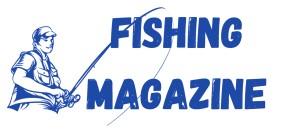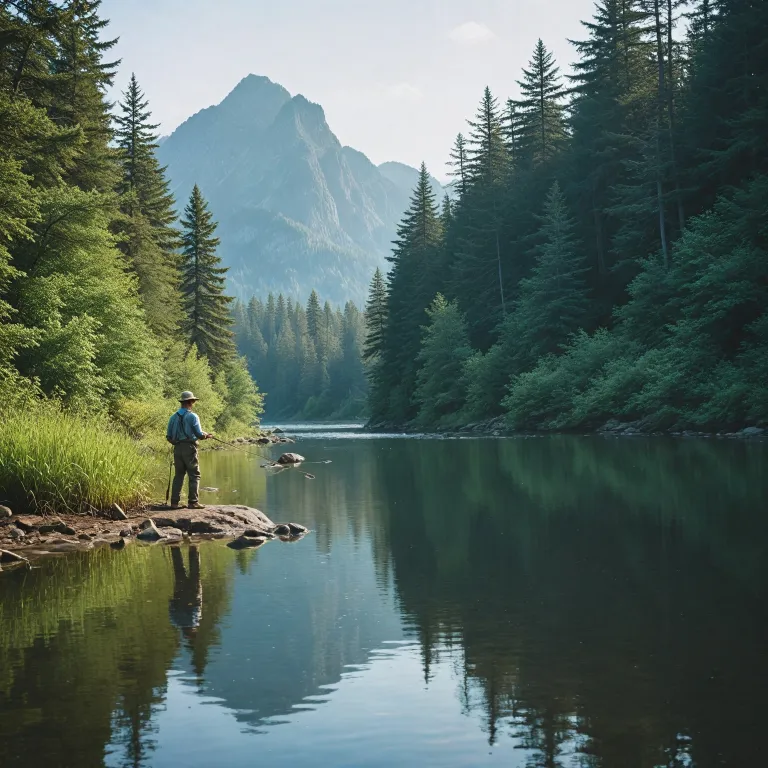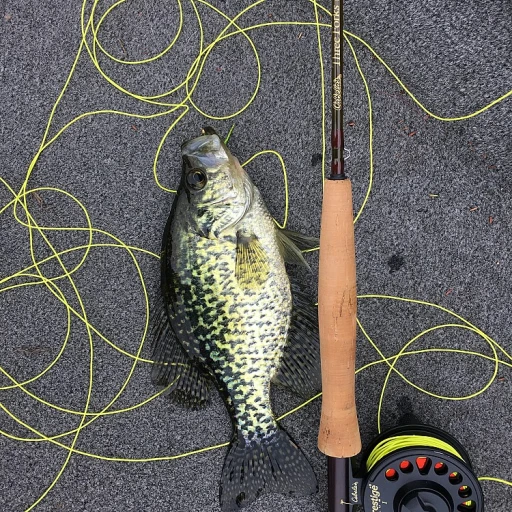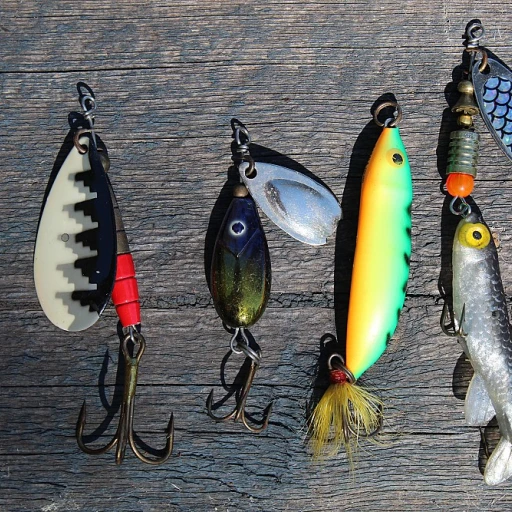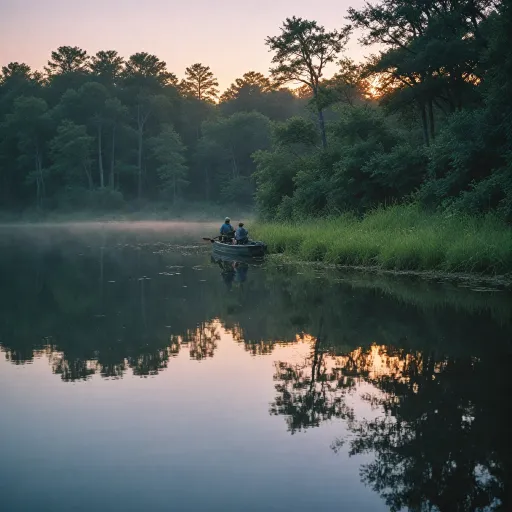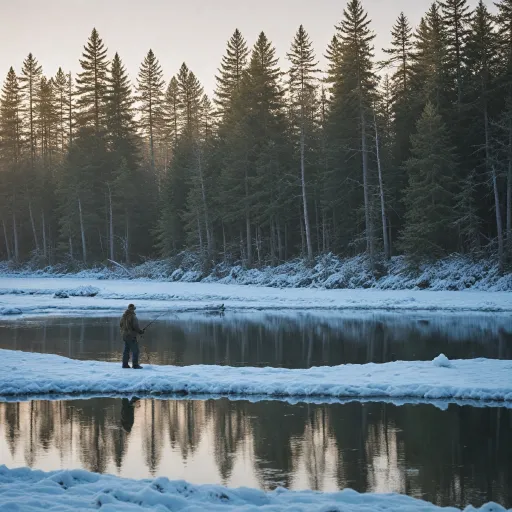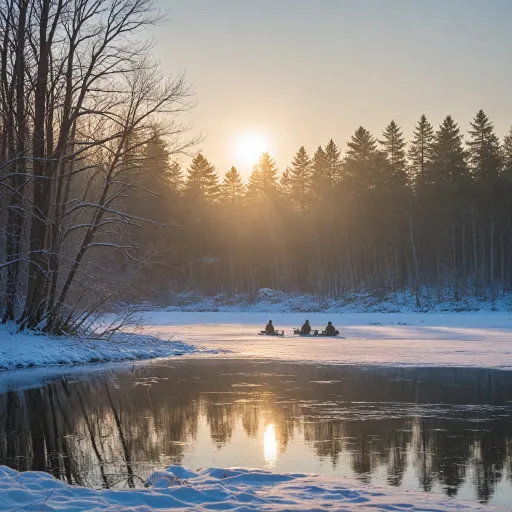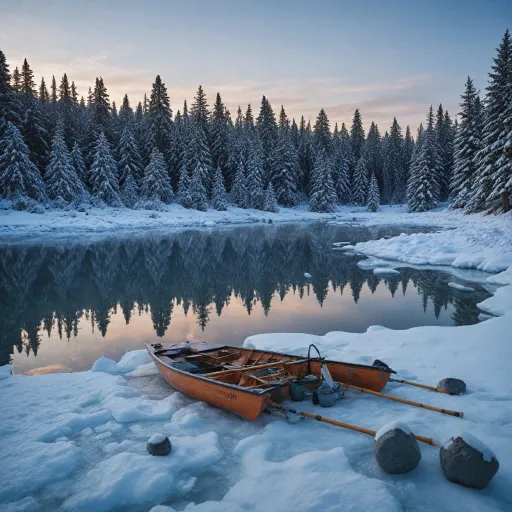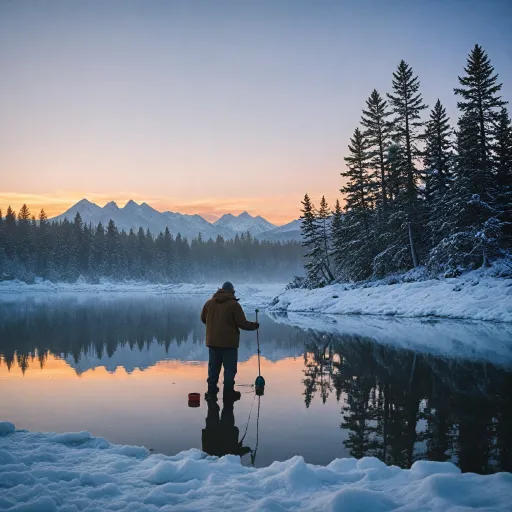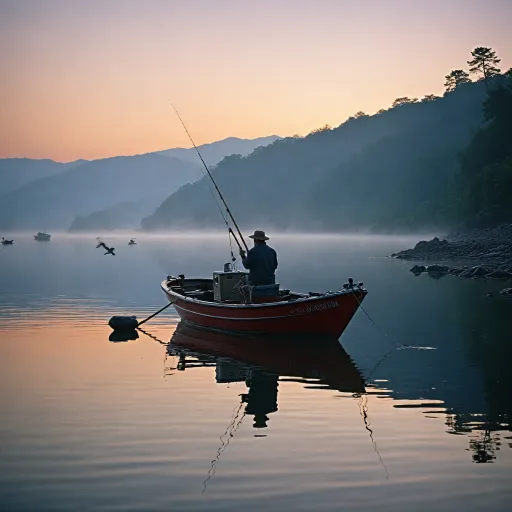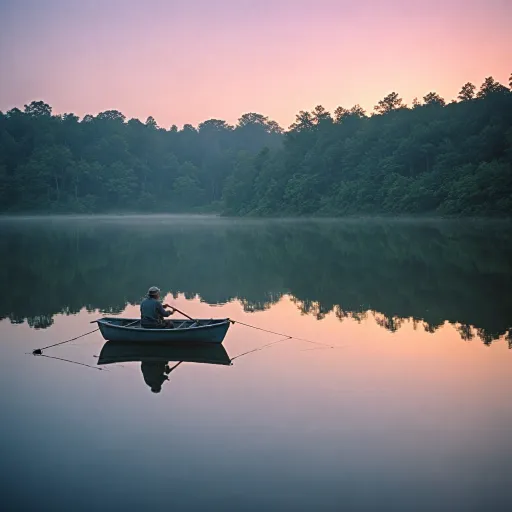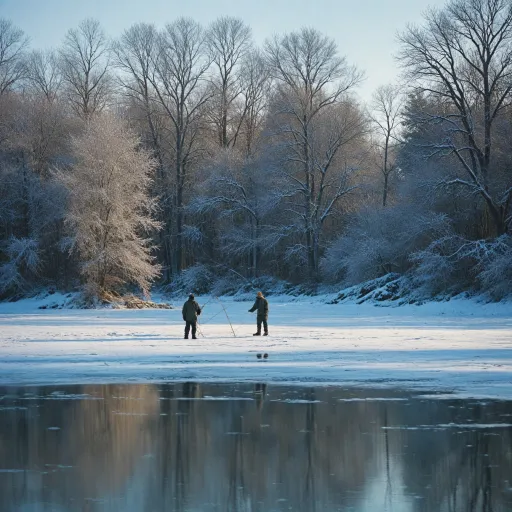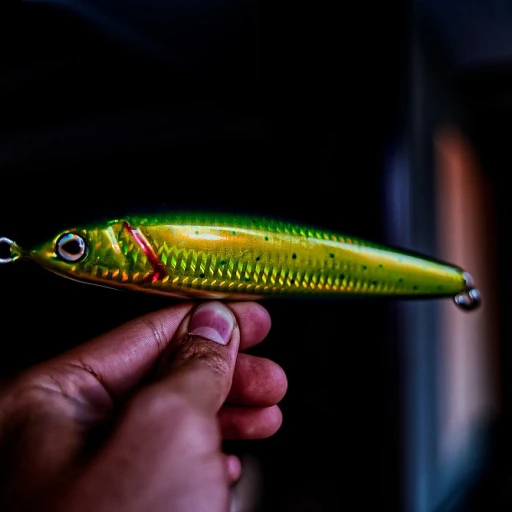
Understanding Fly Fishing Basics
Getting Started with Fly Fishing
Fly fishing is a time-honored pursuit that combines skill, precision, and a deep respect for nature. At its core, this technique involves casting a light, artificial fly using a weighted line. The goal? To mimic the natural food sources of fish such as trout. Understanding the basics of fly fishing is crucial for any angler, whether you're a novice looking for tips or a seasoned expert. Fly fishing stands apart from other types of fishing. Unlike traditional methods, where the weight of the lure propels the line, here, the fly fishing line is heavier. This is key for achieving the delicate and precise casts needed to catch skittish fish in streams, rivers, and lakes. To start, it’s essential to familiarize yourself with fly fishing terminology. Terms like "drift," "nymph," and "roll cast" are fundamental. For instance, the concept of a fly "drifting" naturally in the water, imitating insects or other prey, is something every fly fisherman must master. Furthermore, understanding when trout are "eating nymphs" or other forms of prey can dramatically increase your chances of success. Successful fly fishing also hinges on the selection and use of the appropriate "flies." These artificial lures come in countless varieties and are tailored to specific fish species and environments. Trout anglers often rely on a "hatch chart" to predict which flies are currently hatching and most appealing to fish. If you’re looking to explore the in-depth mechanics that elevate your skills or seeking the ideal equipment, learning about the world of fly reels is indispensable. The right gear ensures you have the optimal setup to read the water effectively and catch the keen-eyed trout. Ultimately, fly fishing is not just about casting a line; it is about understanding ecosystems and respecting the natural environments of the fish. By mastering these fundamentals, you build a foundation that allows you to refine your skills, advance your techniques, and truly marvel at the art of fly fishing.Choosing the Right Fly for the Right Fish
Selecting the Perfect Fly for Every Fish
One of the crucial aspects of fly fishing is the art of choosing the right fly to match the fish you're targeting, the environment, and the specific feeding behaviors observed. Understanding the feeding patterns of trout and other fish types will significantly improve your catch rates. Here's a detailed guide to help you make the right choice.
- Match the Hatch: Often, the key to success in fly fishing is having a fly that resembles what the fish are currently eating. This is where hatch charts become vital. They can offer insight into what insects are prevalent on the river at any given time, aiding in selecting the correct fly pattern.
- Nymphs and Dry Flies: Understanding the distinction between flies is essential. Nymphs are submerged and typically used to mimic larvae. They tend to be effective when fish are eating nymphs below the surface. On the other hand, dry flies rest on the water's surface and are ideal for trout known to hit “top water” prey.
- Fly Weight and Drift: Sometimes adding weight to your fly presentation is required, especially if the fish are eating near the riverbed. An adequately weighted fly ensures a natural drift through the fish's feeding zone, improving your chances of a hook up.
- Consider the Environment: The river or water body you're fishing in will influence your choice. If the water is calm, delicate presentations with smaller flies might be necessary to avoid spooking the fish. In contrast, turbulent waters may require flies that are more prominent and buoyant.
Understanding these elements can enhance your fly fishing experiences, ensuring that your chosen fly combo is as effective as possible. This careful blend of strategy and observation will increase your success and enjoyment on the river.
Casting Techniques for Different Environments
Mastering Different Casting Techniques
In fly fishing, casting is crucial to presenting the fly naturally to the fish. One of the fundamental techniques every fly fisherman should practice is the overhead cast. This cast helps in achieving distance and accuracy, essential for catching fish feeding on the surface of the water. However, not all fishing environments are ideal for the overhead cast. In situations where there is limited space, like a densely wooded river bank, the roll cast becomes invaluable. By using water tension to load the rod, the roll cast allows for a more discreet presentation, ensuring that the fly drifts gracefully to where trout may be lying in wait. Nymph Fishing and Adding Weight When targeting trout eating nymphs, adding weight to your line can help your fly reach the deeper areas of the river bed where fish might be feeding. Adjusting the weight will also impact how the fly drifts along the water column, making it essential when the trout won’t rise to take a surface fly. Maintaining a deft touch when adding weight is crucial. You need to prevent snagging on the bottom while ensuring that the nymph appears as natural as possible to the fish. Adjustments can be in the form of split shot or even using a heavier fly at the top of your leader when fishing a tandem rig. Reading Fish Habitats and Improving Your Catch Rate Understanding how to read different water types will drastically improve your chances of a successful catch. Viewing a stream or river like a roadmap will aid in identifying the most promising fish habitats. Look for seams between fast and slow currents, where feeding trout may await drifting insects. Using a hatch chart can help you adapt to the local hatches, ensuring that the flies you choose mimic the insects trout are currently eating. Remember, always aim for catch and release practices to help preserve fish populations, allowing future anglers the opportunity to share in the thrill of fly fishing.Reading the Water: Identifying Fish Habitats
Decoding the Water's Secrets
Reading the water is an essential skill for any fly fisherman aiming to catch more fish. Understanding where fish like trout are likely to be found can significantly improve your chances of success. Fish, especially trout, often congregate in specific areas of a river or stream, and knowing how to identify these habitats is crucial.
Spotting Prime Fish Habitats
Trout and other fish are often found in areas where they can easily access food while expending minimal energy. Look for spots where the water is slower, such as behind rocks or near the river bed. These areas provide a natural break from the current, allowing fish to rest while waiting for food to drift by. Using a hatch chart can help you determine what flies or nymphs are currently hatching, which in turn helps you select the right fly to mimic the natural food source.
Understanding Fish Behavior
Fish behavior is influenced by several factors, including water temperature, time of day, and available food sources. Trout, for instance, are more active during cooler parts of the day and are often found eating nymphs just below the surface. Observing the water can reveal signs of fish activity, such as ripples or fish rising to eat. These indicators can help you decide where to cast your fly.
Techniques for Effective Casting
Once you've identified a promising spot, it's time to make your cast. Techniques like the roll cast can be particularly useful in tight spaces or when you need to add weight to your fly to reach deeper water. Ensuring your fly drifts naturally with the current is key to convincing fish that your fly is a real insect. Adjusting your casting technique based on the environment will help you achieve a more natural presentation.
Tips for Beginners
- Practice reading the water in different environments to improve your skills.
- Use a hatch chart to select the right fly for the conditions.
- Observe fish behavior to determine the best time and place to cast.
- Experiment with different casting techniques to match the environment.
By mastering the art of reading the water, you'll not only increase your chances of catching fish but also enhance your overall fly fishing experience. Remember, practice and patience are key to becoming proficient in this skill.
Advanced Fly Fishing Techniques
Elevating Your Fly Fishing Game
Once you have a solid grasp of the basics and can choose the right fly for the right fish, it's time to delve into advanced techniques that will truly elevate your fly fishing experience. These methods not only increase your chances of catching more fish but also enhance the overall enjoyment of the sport.
Mastering the Drift
One of the most crucial aspects of fly fishing is ensuring your fly drifts naturally in the water. Fish, especially trout, are highly sensitive to unnatural movements. To achieve a perfect drift, you need to read the river bed and understand the water's flow. Adjust your cast and add weight to your fly if necessary, ensuring it sinks to the right depth where fish are feeding. This technique is particularly effective when targeting trout eating nymphs.
Perfecting the Roll Cast
In environments where space is limited, such as when fishing in a densely vegetated river, the roll cast becomes an invaluable skill. This technique allows you to cast your fly without a backcast, making it ideal for tight spots. Practice the roll cast to ensure you can deliver your fly accurately and with minimal disturbance to the water.
Reading the Hatch Chart
Understanding the local hatch chart is essential for any fly fisherman aiming to catch fish consistently. By knowing which flies are hatching at different times, you can select the most effective patterns to mimic the natural food sources. This knowledge will help you anticipate when and where fish are likely to be feeding, increasing your chances of a successful catch.
Catch and Release Best Practices
As a responsible angler, practicing catch and release is vital to ensure trout populations remain healthy. Use barbless hooks to minimize injury, and handle fish with wet hands to protect their delicate slime coating. Release fish quickly and gently back into the water to give them the best chance of survival.
By incorporating these advanced techniques into your fly fishing repertoire, you'll not only improve your catch rate but also deepen your appreciation for the art of fly fishing. Remember, the key to success lies in continuous learning and adapting to the ever-changing conditions of the water.
Maintaining and Caring for Your Fly Fishing Gear
Proper Care and Maintenance of Your Gear
Maintaining your fly fishing gear is essential for success and longevity. Whether you’re out on the river chasing trout with a nymph or perfecting your roll cast, taking care of your equipment is crucial. Here are a few tips on how to keep your gear in top condition:- Rinse and Clean Regularly: After each fishing trip, especially if you’ve been fishing in saltwater, rinse your rods, reels, and flies with fresh water. Salt and grime can corrode gear over time, affecting performance and lifespan.
- Check Your Lines and Leaders: Inspect your lines often. A damaged line won't drift or cast effectively, potentially reducing your ability to catch fish. Running your fingers along the line and leader can help you identify any nicks or abrasions.
- Dry Your Gear Thoroughly: Wet gear can lead to mold and mildew, compromising materials and creating unpleasant odors. Ensure all your equipment, especially waders, boots, and vests, are completely dry before storage.
- Store Properly: Rods should be stored straight in a rod case to avoid damage. Reels should be stored in a cool, dry place with loosened drags to reduce tension on internal mechanisms.
- Regular Maintenance Checks: Familiarize yourself with the components of your reel. Occasionally disassemble and clean the reels to ensure they operate smoothly. Lubricate gears and bearings as needed.
- Pay Attention to Your Flies: Inspect flies for rust or damage before heading to the water, especially if you regularly fish in diverse conditions or environments. Keeping them organized in a fly box helps avoid unnecessary wear.
